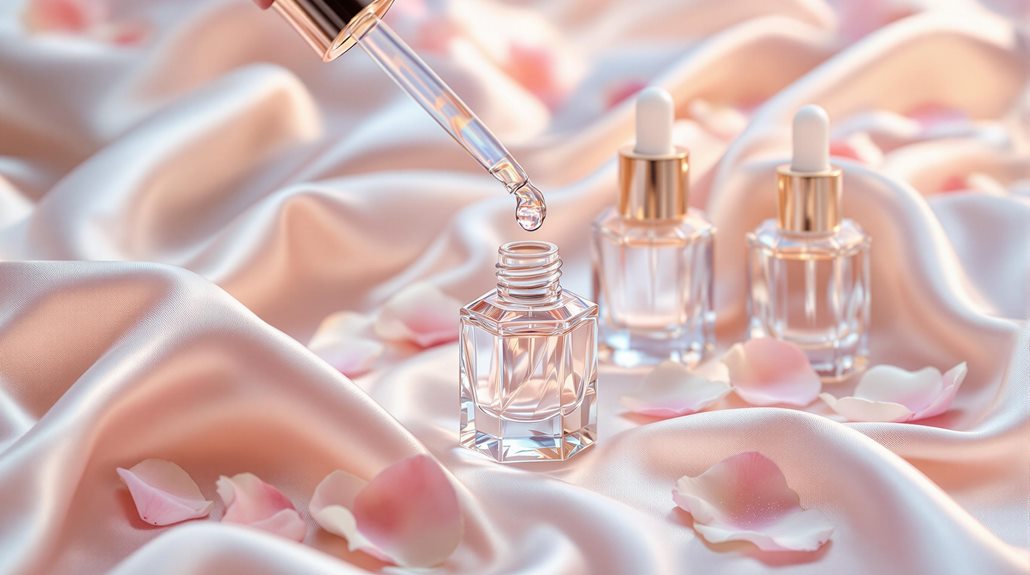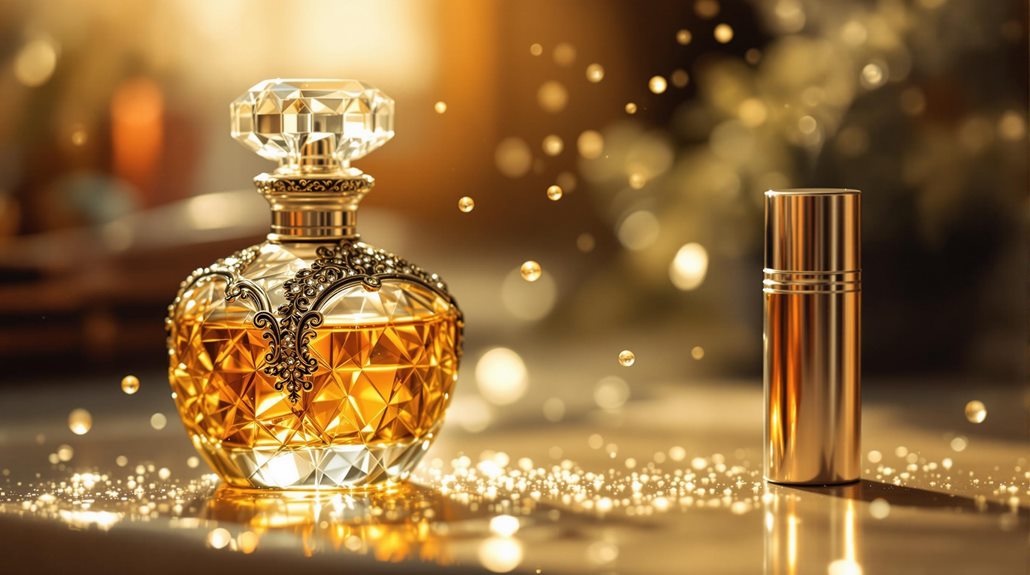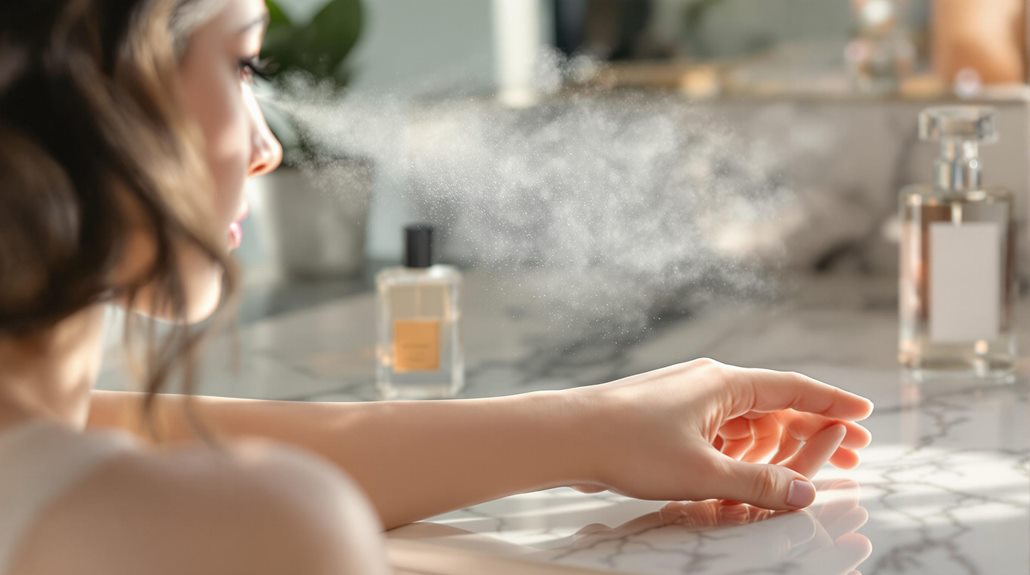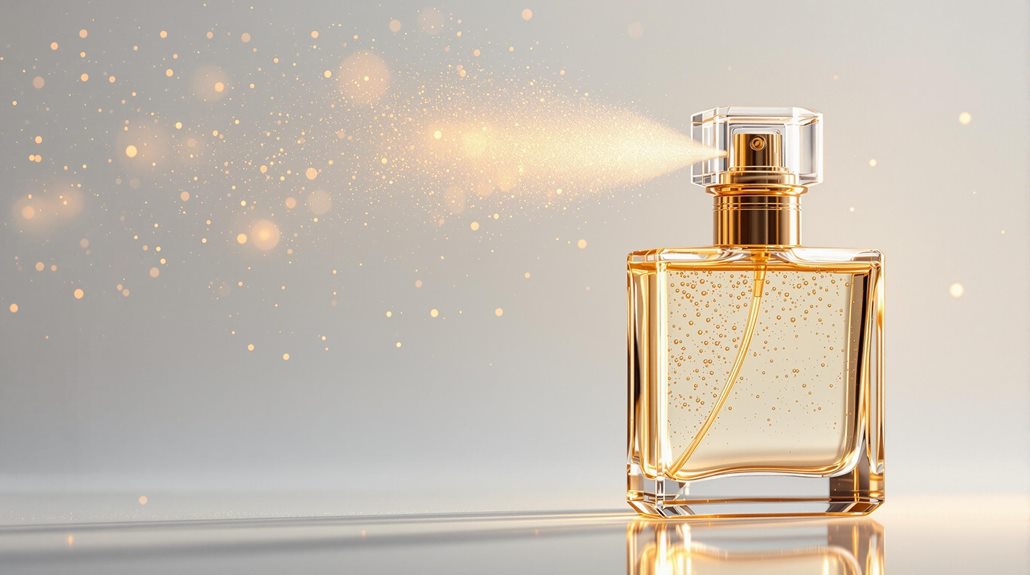What Are the Most Popular Perfume Brands Right Now?
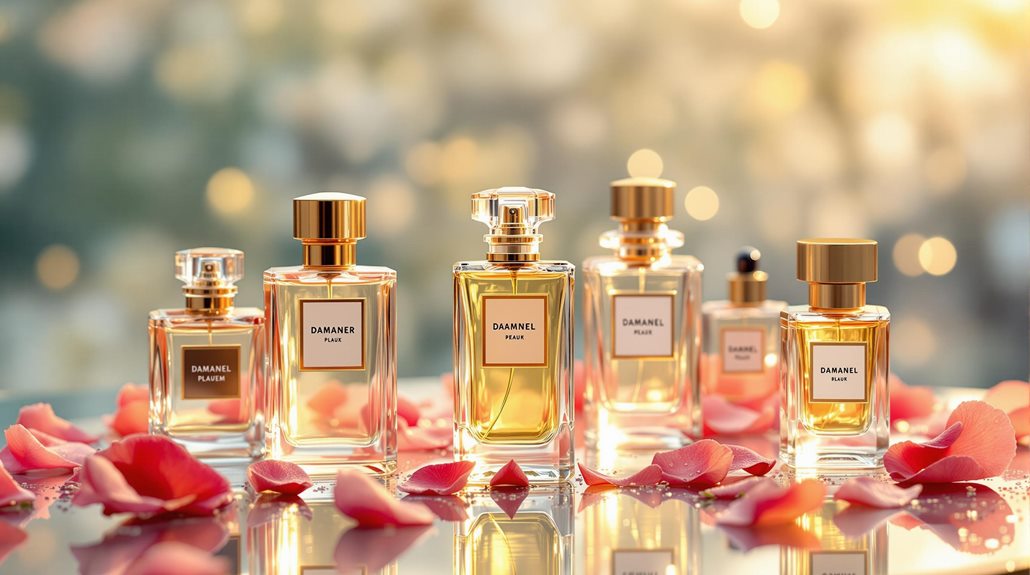
You'll find today's most popular perfume brands dominated by luxury conglomerates like LVMH, Estée Lauder, and Coty. Chanel remains a benchmark with its iconic No. 5, while Calvin Klein, Gucci, and Burberry consistently rank among top sellers. Celebrity collaborations have surged, with standouts like Dua Lipa's YSL Libre Intense and Julia Roberts' Lancôme La Vie Est Belle capturing significant market share. Signature scents like Dolce & Gabbana Light Blue and Viktor & Rolf Flowerbomb continue to lead sales charts. From innovative Web3 integrations to sustainable practices, there's much more to investigate in today's evolving fragrance terrain.
Global Fragrance Market Leaders
Within the global fragrance industry, a handful of dominant luxury conglomerates control most of the market share. You'll find that LVMH, the world's largest luxury group, stands at the forefront of the global fragrance market with its impressive portfolio of prestigious brands including Dior, Guerlain, and Givenchy. These powerhouse names have helped cement LVMH's position as a market leader.
When you're exploring high-end fragrances, you'll notice Estée Lauder's significant presence through its ownership of sought-after brands like Tom Ford, Jo Malone, and Michael Kors. Similarly, Coty has established itself as a major player by acquiring and managing popular fragrance lines such as Calvin Klein, Burberry, and Gucci.
Don't overlook Shiseido's growing influence in the fragrance sector. This Japanese beauty behemoth has successfully expanded its reach globally, offering distinctive scents through brands like Clé de Peau Beauté, Narciso Rodriguez, and Serge Lutens. Together, these four companies dominate the luxury fragrance terrain, consistently introducing new scents and maintaining their established bestsellers to meet diverse consumer preferences.
Trending Perfume Houses
In line with current market trends, several perfume houses are reshaping the fragrance domain through innovative launches and digital strategies. You'll find that iconic brands like Givenchy are embracing Web3 and launching podcasts featuring celebrities to maintain their position among popular fragrances.
- Chanel continues to dominate with their alluring scents, particularly their best selling perfumes like Chanel No. 5, which remains a benchmark in luxury parfum spray for women
- Calvin Klein's Defy Eau de Parfum Spray stands out as their premium offering at $133, representing PVH Corp's strong presence in the fragrance market
- Coty Inc.'s portfolio of Gucci, Chloe, and Marc Jacobs fragrances consistently ranks among the most sought-after perfumes
Montblanc is expanding its reach through travel retail channels, while Givenchy's digital evolution signals a shift in how luxury fragrance brands connect with consumers. You're witnessing a market where traditional perfume houses are adapting to modern demands while maintaining their prestigious heritage. Whether you're shopping in duty-free or online, these brands are making their mark by balancing innovation with timeless appeal in the competitive fragrance domain.
Luxury Brand Sales Performance
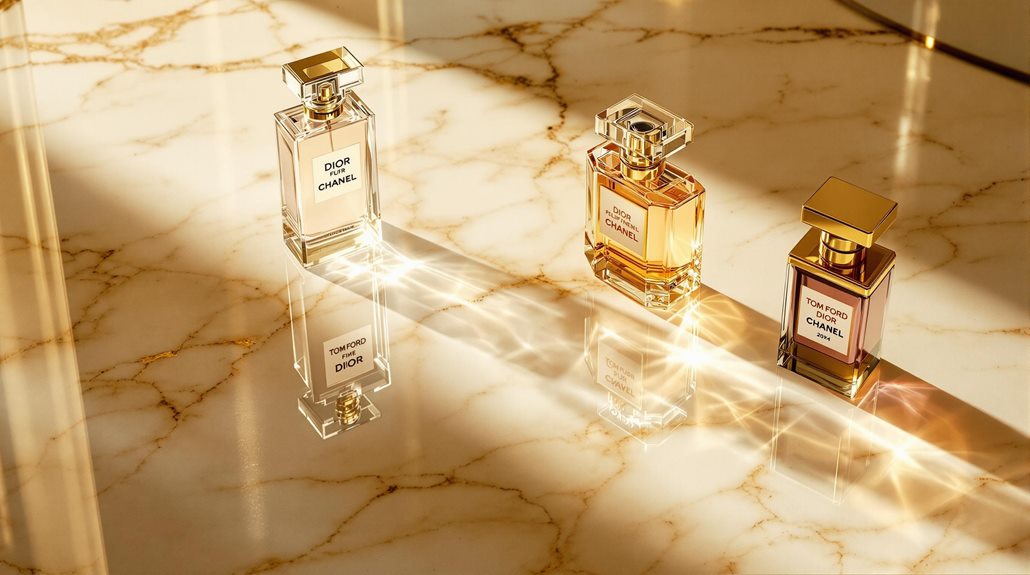
Leading luxury fragrance brands have demonstrated plunge sales performance across diverse price points and market segments. Calvin Klein, representing 39% of PVH Corp's total business, has positioned itself with premium selections like the Defy Eau de Parfum at $133, showing strong market presence in the luxury segment.
You'll find Burberry's fragrance portfolio strategically priced between $50 to $150, attracting both younger and mature consumers with their range of Eau de Toilette and De Parfum options. This pricing strategy has helped them maintain competitive market positioning while preserving their luxury appeal. Similarly, Giorgio Armani has carved out a significant market share with their iconic Acqua di Gio and Armani Code fragrances, offering sophisticated scents within the $60 to $150 range.
The luxury fragrance market continues to evolve with brands adopting innovative strategies. You'll notice Givenchy's focus on new launches and Web3 integration, while Montblanc expands through travel retail channels. These approaches demonstrate how luxury brands are diversifying their sales channels and marketing strategies to maintain growth and market relevance while catering to changing consumer preferences.
Celebrity-Endorsed Perfume Success Stories
Star power has altered the fragrance industry through strategic celebrity endorsements that drive exceptional sales performance. You'll find that signature scent choices are heavily influenced by celebrity ambassadors who've transformed certain fragrances into best-selling womens perfume sensations.
Notable success stories in the Eau de Parfum category include:
- Dua Lipa's collaboration with YSL Libre Intense, which has significantly increased the fragrance's market presence
- Julia Roberts' enduring partnership with Lancôme La Vie Est Belle, establishing it as a timeless favorite
- Valentino's strategic alliance with Donna Born In Roma Coral Fantasy, creating substantial market buzz
These celebrity endorsements aren't just about glamour - they're driving real sales results. You'll notice that fragrances like Mugler's Alien Hypersense Eau de Toilette Spray have gained considerable traction through celebrity influence, while Carolina Herrera's Good Girl Blush has achieved extraordinary commercial success through its high-profile ambassadors. When you're choosing your next Eau de, you're likely to encounter these celebrity-backed fragrances prominently displayed at luxury retailers, as they've become some of the most in-demand scents in the market.
Best-Selling Signature Scents
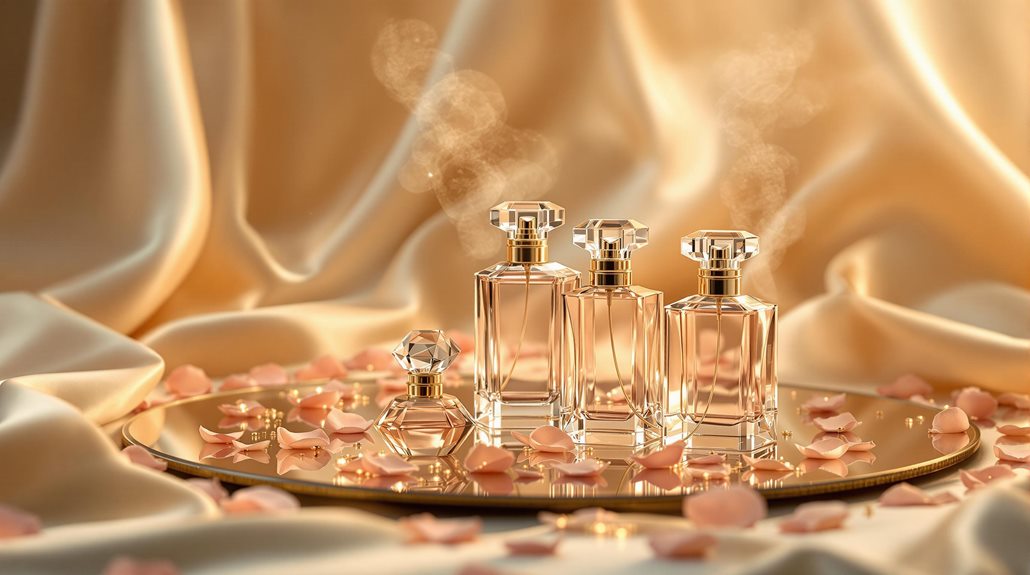
Beyond celebrity endorsements, specific signature scents have earned their status through pure olfactory excellence and consistent consumer appeal. Among the most coveted Eau de Toilette Spray for Women, Dolce & Gabbana Light Blue stands out with its invigorating citrus-floral composition that's captured hearts worldwide.
You'll find Viktor & Rolf's Flowerbomb consistently ranking as a best-selling fragrance, thanks to its explosive floral notes that create an unforgettable identity. Yves Saint Laurent's Black Opium has revolutionized women's perfume with its daring coffee-floral blend, making it a staple in Parfums de luxury collections. If you're drawn to gourmand scents, Lancome's La Vie Est Belle offers an irresistible combination of iris, jasmine, and praline that's earned its place among top sellers.
Gucci Bloom represents a more recent success story, featuring natural tuberose, jasmine, and honeysuckle. It's quickly become one of the most sought-after Eau de Parfums, proving that traditional floral compositions can still fascinate modern consumers. Each of these fragrances continues to dominate the market by delivering distinctive scent profiles that captivate perfume enthusiasts seeking their signature scent.
Emerging Fragrance Market Disruptors
Several innovative brands are reshaping the traditional fragrance market through digital initiatives and unique sales strategies. You'll find luxury powerhouses embracing new technologies and distribution methods to capture market share and stay relevant in today's modern era.
- LVMH's Givenchy is leading the charge in digital innovation by incorporating Web3 technology into its brand strategy, while also launching the Givenchy Conversations podcast featuring celebrity icons to connect with younger audiences.
- Calvin Klein continues to dominate the luxury fragrance space, representing 39% of PVH Corp's total business. Their premium offering, Defy Eau de Parfum at $133, shows they're positioning themselves in the high-end market segment.
- Montblanc is disrupting traditional retail models by focusing heavily on travel retail and duty-free channels, creating a unique distribution strategy that sets them apart from competitors.
These market disruptors are changing how you experience and purchase fragrances. They're moving beyond traditional retail approaches by embracing digital technologies, premium positioning, and alternative distribution channels. This shift represents a significant evolution in the fragrance industry, where brands must innovate to maintain their competitive edge and meet changing consumer preferences.
Heritage Perfume Houses Today
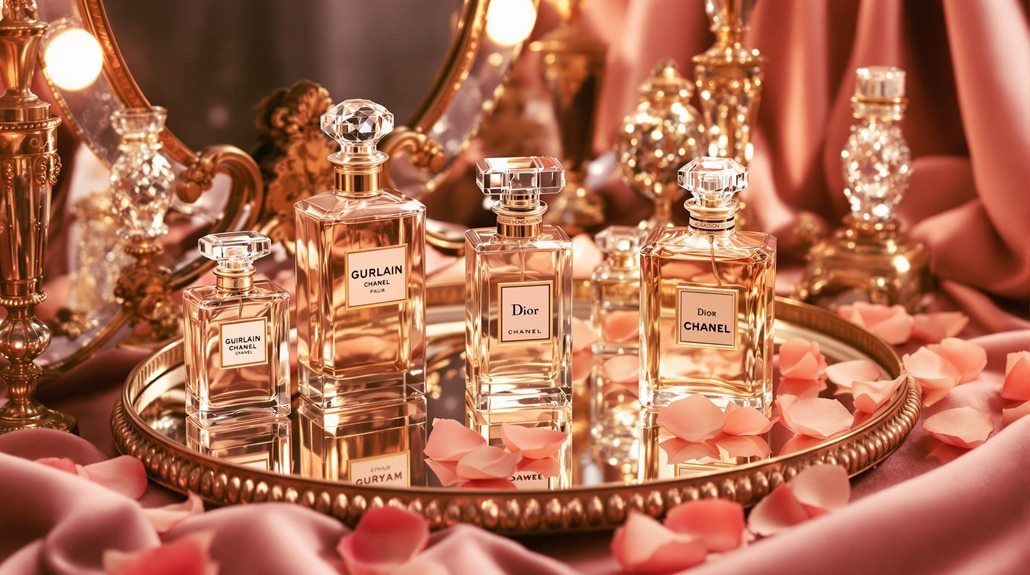
Luxury icons Hermès, Versace, and other heritage perfume houses continue to dominate the fragrance industry while adapting to modern market demands. You'll find these established brands expertly balancing their storied traditions with contemporary innovations, as evidenced by their latest market strategies.
When you're exploring Hermès' collection, you'll uncover their renowned Terre d'Hermès and other Eau de Perfumes, which showcase the brand's commitment to luxury with prices spanning from $80 to $350. Versace maintains its position with bold Women's fragrances like Intense Eau de parfums, keeping prices accessible between $60 and $120. Meanwhile, Givenchy's embracing digital transformation through Web3 initiatives and podcasts featuring celebrities, proving heritage doesn't mean being stuck in the past.
Other traditional houses are changing too. You'll see Montblanc expanding its presence in travel retail, while Calvin Klein, representing 39% of PVH's business, continues to push boundaries with premium propositions like their Defy Eau de Parfum at $133. These heritage brands are proving they can maintain their prestigious legacy while meeting today's consumer expectations through strategic adaptations and innovative launches.
Digital Marketing Impact
The digital revolution has altered how perfume brands connect with their customers, making online engagement essential for market success. You'll find leading fragrance houses leveraging social media influencer partnerships and content marketing to showcase their latest scents and build authentic connections with consumers. Through e-commerce platforms and personalized product recommendation engines, you're now able to find and purchase fragrances tailored to your preferences.
Modern perfume brands are using digital innovations to enhance your shopping experience:
- Virtual try-on features and augmented reality let you experience fragrances digitally before making a purchase
- Subscription services deliver curated scent collections to your door while building brand loyalty
- Limited-edition online exclusives create excitement and drive direct-to-consumer sales
Data analytics have become indispensable for brands to understand your preferences and shopping behaviors. This invaluable information helps them optimize their digital marketing campaigns and develop new fragrances that resonate with your desires. As technology continues to evolve, you'll see more sophisticated digital strategies transforming how you find, experience, and purchase your favorite perfumes.
Sustainable Fragrance Innovations
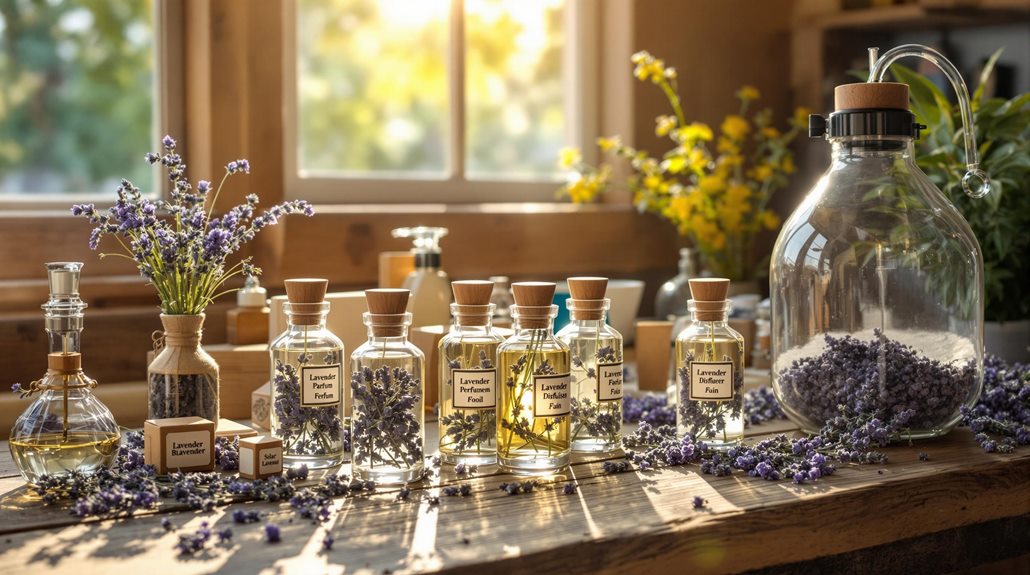
Building on the digital reshape in perfumery, today's fragrance houses are embracing sustainable practices that align with eco-conscious values. You'll find luxury brands revolutionizing their product lines with sustainable ingredients and eco-friendly packaging solutions that reduce environmental impact while maintaining premium quality.
Guerlain leads this green revolution with its Bee Respect collection, sourcing natural beeswax and honey from its dedicated bee farm to create environmentally responsible fragrances. Jo Malone London's innovative approach includes refillable perfume bottles, helping you minimize plastic waste while enjoying their signature scents at a better value. Tom Ford's Private Blend collection demonstrates luxury can be sustainable, utilizing renewable materials and biodegradable sugarcane-derived alcohol in their formulations. You'll also uncover Maison Margiela's commitment to sustainability through their Replica line, which features recyclable glass bottles and natural raw materials.
These industry leaders aren't just creating fragrances; they're reshaping the future of luxury perfumery by proving that premium scents can coexist with environmental responsibility. Their initiatives show you don't have to compromise between indulgence and sustainability in your fragrance choices.
Consumer Buying Patterns
Modern fragrance consumers demonstrate increasingly sophisticated purchasing behaviors, driven by a perfect storm of digital influence and conscious consumption. When you're shopping for womens perfumes today, you'll notice that sustainability has become a major factor in decision-making, with many popular perfume brands highlighting their eco-friendly practices and ethically-sourced ingredients.
Key trends reshaping how consumers buy womens fragrances include:
- A willingness to invest more in premium and luxury scents that align with personal values
- Strong influence from social media personalities and celebrity endorsements on purchasing decisions
- Growing preference for customizable fragrances that reflect individual style
The digital revolution has transformed how you examine and purchase perfume brands. You're now more likely to research and buy fragrances online, taking advantage of detailed product descriptions, reviews, and virtual sampling programs. This shift to e-commerce has accelerated during recent years, making it easier than ever to uncover new scents from the comfort of your home. Additionally, you're part of a growing segment of conscious consumers who expect transparency about sustainability practices and ingredient sourcing from their favorite fragrance houses.
Conclusion
You'll find today's perfume market dominated by iconic houses like Chanel, Dior, and Tom Ford, alongside emerging sustainable brands reshaping the industry. Whether you're drawn to classic scents or celebrity fragrances, there's never been more choice. As digital marketing transforms how you uncover new perfumes and sustainability becomes vital, your options range from luxury signatures to eco-conscious alternatives that meet modern preferences.

